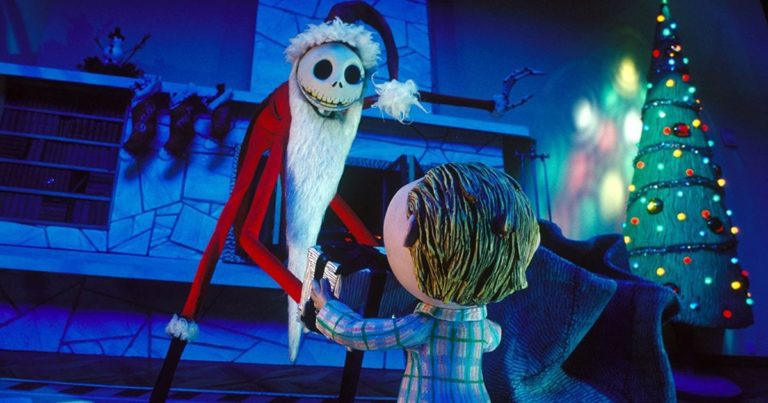Santa Claus is Jewish, Too
I was five years old when I stopped believing in Santa Claus. In our home we celebrated the eight days of Hanukkah in the traditional ways, but of course my brothers and I were well versed in Santa, too. My parents encouraged our belief in this kind, jolly man and as all parents they wanted to keep the illusion alive as long as possible. After all, how could a story that teaches good behavior hurt a child?
I remember waking up early Christmas morning before anyone else; quietly running barefoot from my bedroom to the living room downstairs. I checked the coffee table for the milk and cookies that mom left for Santa the night before; the glass was empty and the cookies gone. Proof he had been here! I scanned the room—there on the fireplace hearth were gifts wrapped in glistening Hanukkah paper! I had to force myself to check my eagerness and wait for my brothers and parents to wake before impulsively tearing into them. Impatiently, I waited—minutes seemed like hours in kid time. Finally! After coffee and a quick breakfast, we gathered in front of the fireplace to open gifts together. The tag on my gift said: “Happy Hanukkah Michael, from Santa.” I knew it! He loved Jewish kids too! I ripped into the box—ROLLER SKATES! How did Santa know?
Nearly a year later, as our Santa excitement started bubbling again, my twin brother, Elliott and I debated what we wanted him to bring us. Our older, cynical brother, Harry, who was a “mature” nine years old was eavesdropping on our conversation and rudely harpooned our enthusiasm.
“You’re wasting your time!” He wisely informed us. “Santa Claus isn’t real, He’s fake!” As the oldest, he felt it was his duty to set us straight. “Macy’s made him up so they can sell stuff and make more money,” he snickered, mocking our naive ignorance.
“He’s lying!” I exclaimed, trying to hold back tears. Sobbing, Elliott and I sprinted to find mother knowing she would assure us that Harry was a big poopy liar, but instead she glared daggers at Harry while answering us with a soft voice, “Some of what he says is true, Santa himself isn’t a real person but he represents an idea of wonder and goodness.” And so, at the tender age of six, I learned the hard lesson that Santa was “fake.” But my mother’s explanation wasn’t enough to soothe my six-year-old disenchantment and I still thought Harry was a big poopy liar.
The history of Santa Claus, the legend, was modeled after Saint Nicholas of Myra, (Saint Nick, another of Santa’s many names) a devout Christian from the third century, born in an area known today as Turkey. As a teen, Nicholas lost his parents to a pandemic, but instead of allowing his devastating circumstance to harden his heart, he turned it into compassion for the suffering of others. The stories of his life portray how he embraced the Jewish concept of “repairing the world,” Tikkun Olam, with his kindness and generosity. His many miracles and his lifestyle impressed the Christian Church enough to make him the Patron Saint of Children in the year 1446. Since that time the Story of Santa Claus has grown and spread throughout the world with its diverse cultural aspects.
Saint Nicholas of Myra has affected Christians as well as Jews. Today, there are plenty of Jews emulating him. Take Rick Rosenthal, an Orthodox Jew living in Atlanta, Georgia. He perceives Santa as a nonreligious spiritual figure who provides trust, reassurance, and comfort to the young and old. Even my older brother, Harry, played Santa for many years when his daughter was a child. Perhaps he was doing community service for his crime of spilling the beans to his naïve twin brothers so many years ago.
The Jewish people gave the world the Torah and from the lessons it holds, they teach their children the importance of giving of self for a higher purpose. Isn’t that what Santa Claus does too? Questions often arise such as do Jewish people believe in Santa Claus or do Jews believe in Santa Claus, reflecting cultural curiosity and interfaith dialogue. The Bible says in Isaiah 49.6: “…I shall submit you as a light unto the nations to be my salvation until the end of the earth.” G-d calls upon the Children of Israel to set a positive example as our duty as Jews to be a light upon the world leading the way to a brighter future. The practice of tikkun olam can easily be likened to Santa’s lessons to children of goodness, rewarded with a gift—some even muse about the idea of a Jewish Santa or ask, Is Santa Claus Jewish?
A good illustration of being a “light unto nations” is the coveted Nobel Prize. There are almost eight billion people living on planet earth today, but only a scant .2% of that number are Jewish, yet 20% of Nobel recipients are Jews. Included among them are notables: Albert Einstein (1925-Physics), Gerty Cori (1947-Medicine), Isaac Bashevis Singer, (1978-Literature), Paul Berg (1980-Chemistry), and Yitzhak Rabin (1994-Peace). These Jews practiced tikkun olam, whether they labeled it that or not. They believed that the world could be a better place and decided to do something about it through their brilliance and inventions.
The Jewish people teach their children the importance of learning, reading, and giving of self for a higher purpose. Isn’t that what Santa Claus does? He inspires children to behave themselves and encourages them to give of themselves to make their communities a better place to live. That is true “tikkun olam”.
Happy Hanukkah and Merry Christmas to my wonderful readers.
Michael Thal is the author of The Lip Reader, a novel about deafness.






I don’t think I heard of Santa Claus until well into my teenage years. I was raised in an ultra orthodox Jewish home and it was like we were on a different planet.
Thank you for always teaching me something new that I can share with others. You are a very bright light ✨
I love reading and sharing your blogs!
Happy Holidays!!
Thank you for sharing my blog with your friends, Cindy. I really appreciate that. -Michael
Michael, lovely story, but I need to be a poopy big brother too and correct the myth.
St. Nicholas of Myra was a good bloke, but he is NOT the origin of Santa.
Nicholas, Bishop of Madrid is.
For the evidence, let’s go backward.
Santa conquered the planet when Victoria was Queen of Britain, and ruled a worldwide empire. Whatever the Brits did, everyone copied.
Victoria married a German prince, and he brought many German customs with him. One was St. Nick, who climbed down chimneys and lived at the North Pole. He brought presents to good children, but his black servant, called things like Grampus, left coal to naughty kids instead.
The German legend can be traced to the Netherlands, although it got severely modified on the way.
For the Dutch, St. Nic arrives on his birthday, which is the 5th of December, on a ship from Spain. He wears Cardinal’s robes. Behind him is his beloved servant Black Pete, who scatters sweets to the children.
And one step back: when Holland was a colony of Spain, there was a Nicholas, Bishop of Madrid, who genuinely had the habit of riding through the poor quarters, with his servants behind him scattering presents, on his birthday, 5th December.
🙂
Bob
Thanks for the info, Bob. -Michael
Michael,
I still put on my Santa Suit each year bringing joy to the children at Melanie’s Day Care center in Bakersfield. It is harder on the old knees. Sorry I disillusioned you at age 6. As many childhood memories, they escape me. Thanks for this piece. Wonderful reading. Also, I am enjoying the Lip Reader. Looking forward to another chapter as time for sitting down is limited.
Harry
I didn’t think you’d remember spilling the beans about Santa when you were 9. Elliott and I were on the front porch playing and discussing our Santa wishes when you opened Pandora’s box. -Michael